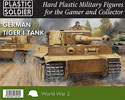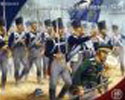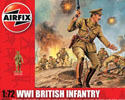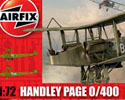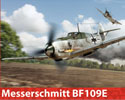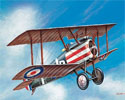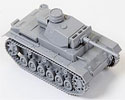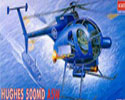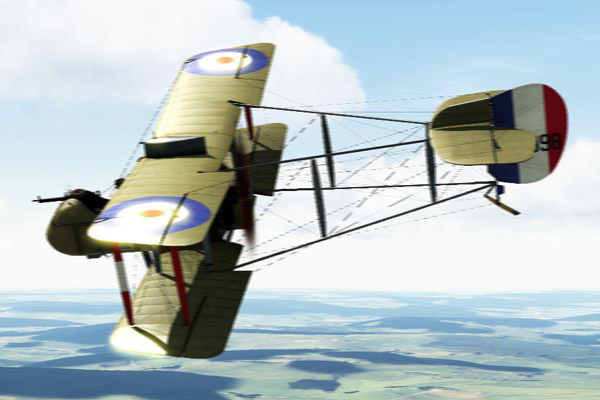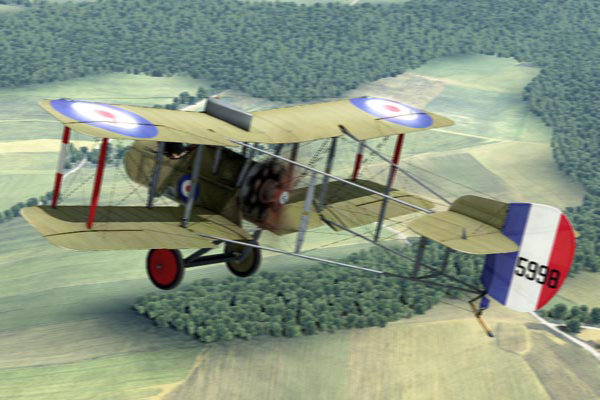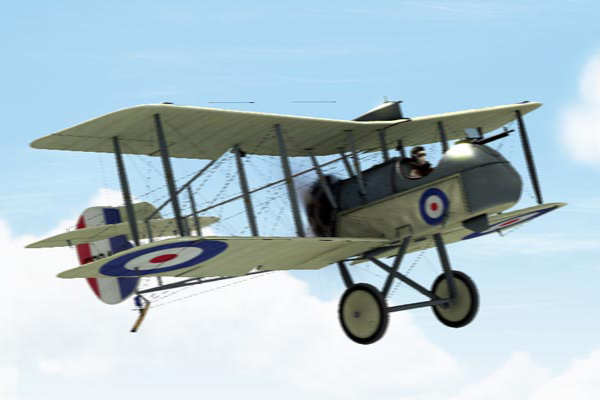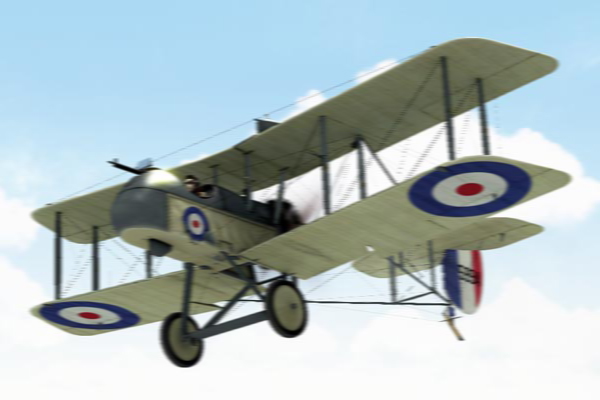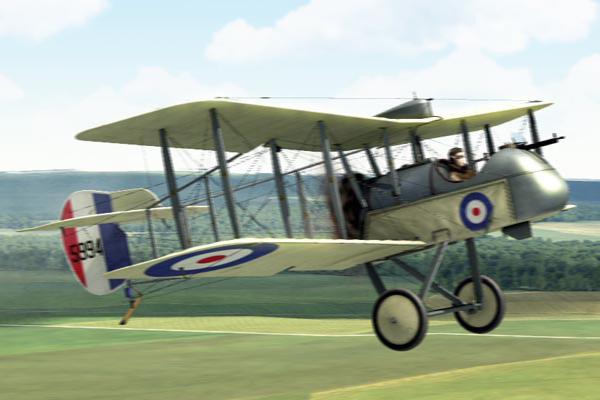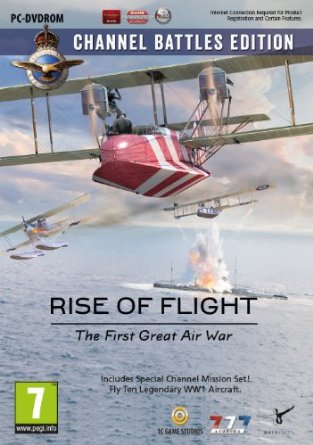The First World War - Airco Dh2
Airco D.H.2
The Fokker Eindecker made a huge impact on aerial warfare because of its synchronized machine gun that could fire forward through the propeller with out damaging it. The Allies introduced some new types to combat it. One of these was the Airco D.H.2 that utilised a propeller mounted at the back, pushing the aircraft, so that a machine gun could be mounted that fired forward.
The pusher configuration wasn't the optimum for a fighter aircraft but, in the absence of a method of ensuring a forward firing machine gun didn't destroy the propeller, it was the best the allies could hope for at the time.
The Airco D.H.2 was designed by Geoffrey de Havilland. It was very similar in many respects to the the two seat D.H.1 that de Havilland had designed earlier, being configured as a pusher type, with the propeller at the back pushing the aircraft along, so that a machine gun could be fitted that could fire forwards without destroying the propeller. It began service with No. 24 Squadron R.F.C. during February 1916. Despite being under powered and ungainly the D.H.2 was proved be maneuverable and more than equal to the Fokker Eindecker then in use by the German Air Service. The D.H.2 along with the F.E.2 and Nieuport 11 ultimately proved to be instrumental in breaking the Fokker Scourge and gaining air superiority for the Allies during the Somme Offensive of 1916. The D.H.2 saw service with seven fighter squadrons on the Western Front until September 1916 when, due to the introduction of more capable tractor type aircraft by the Germans, it was completely outclassed and began to be withdrawn from front line service. By June 1917 it had been replaced altogether. Some aircraft continued in use on secondary fronts and as trainers until the end of the war.
| Crew: | 1 |
| Length: | 7.69 m (25 ft 2.5 in) |
| Height: | 2.91 m (9 ft 6.5 in) |
| Wingspan: | 8.61 m (28 ft 3 in) |
| Empty Weight: | 428 kg (942 lb) |
| Loaded Weight: | 654 kg (1,441 lb) |
| Powerplant: | 1 x Gnome Monosoupape air-cooled rotary engine, 75 kW (100 hp) |
| Max Speed: | 150 Km/h (93 mph) at sea level |
| Range: | 400 km (250 mile) |
| Service Ceiling: | 4,265 m (14,000 ft) |
| Armament: | 1 x 0.303 in (7.62 mm) Lewis machine gun (47 round magazine) |

